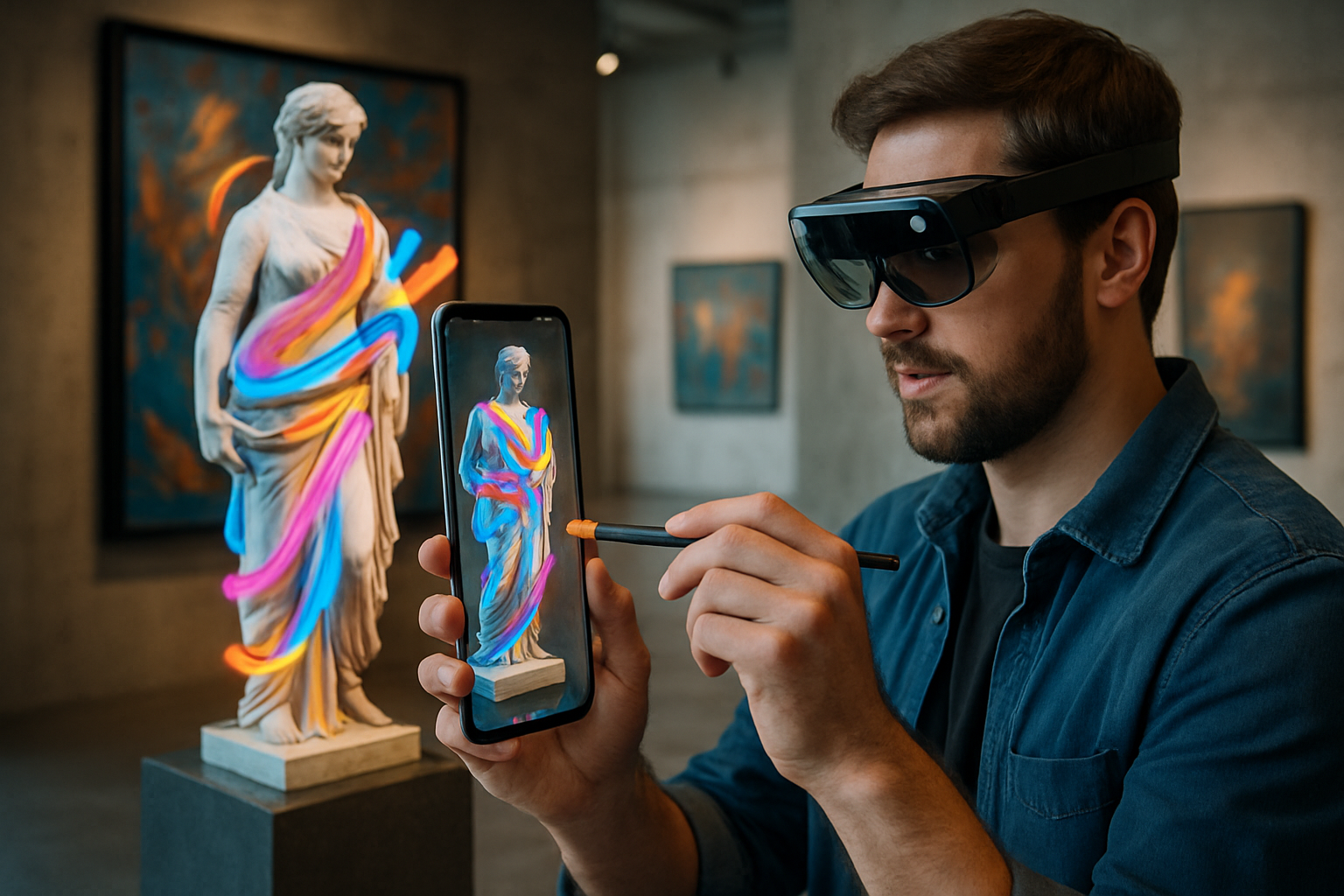Augmented Reality's Silent Revolution in Museums
In a world where technology continually reshapes our experiences, museums are undergoing a quiet transformation. Augmented Reality (AR) is subtly redefining how we interact with art and artifacts, breathing new life into static exhibitions and bridging the gap between past and present. This innovative approach is not just enhancing visitor engagement; it's revolutionizing the very concept of museum curation and educational outreach. As cultural institutions worldwide embrace this technology, we stand at the threshold of a new era in museum experiences.

Beyond the Audio Guide: AR’s Multifaceted Applications
AR technology in museums has evolved far beyond simple information overlays. Today, it offers immersive experiences that can reconstruct ancient ruins, bring extinct species to life, or allow visitors to step into famous paintings. The British Museum’s collaboration with Samsung to create a virtual Bronze Age roundhouse is a prime example, allowing visitors to explore a 3D reconstruction of an ancient dwelling through their smartphones.
Curating the Invisible: AR’s Impact on Exhibition Design
The integration of AR has fundamentally altered the way curators approach exhibition design. No longer constrained by physical space or the fragility of artifacts, museums can now showcase expansive collections and delicate pieces through virtual means. This has led to a reimagining of gallery layouts, with AR hotspots becoming as crucial as the physical artifacts themselves. The Smithsonian’s National Museum of Natural History’s Skin & Bones app exemplifies this, bringing skeletal exhibits to life with flesh and movement.
Accessibility and Education: AR as a Learning Tool
One of AR’s most significant contributions to museums is in the realm of accessibility and education. For visitors with disabilities, AR can provide alternative ways to experience exhibits, such as sign language interpretations or descriptive audio. In educational settings, AR turns museum visits into interactive learning experiences, allowing students to engage with history and science in unprecedented ways. The American Museum of Natural History’s Explorer app, for instance, offers personalized tours and scavenger hunts that cater to different age groups and interests.
The Challenges of Implementing AR in Cultural Institutions
Despite its potential, the integration of AR in museums is not without challenges. High development costs, the need for continuous technological updates, and concerns about maintaining the authenticity of the museum experience are significant hurdles. Moreover, there’s the risk of creating a digital divide, potentially alienating visitors who are less technologically savvy or those without access to compatible devices.
Future Horizons: AR and the Evolution of Museum Experiences
As AR technology continues to advance, its potential applications in museums are boundless. From personalized, AI-driven tours to collaborative virtual exhibitions that span multiple institutions, the future of museum experiences is set to be more interactive and inclusive than ever before. The Cleveland Museum of Art’s ArtLens Gallery offers a glimpse into this future, featuring a 40-foot interactive wall that allows visitors to curate their own virtual exhibitions.
Preserving the Past, Embracing the Future
The integration of Augmented Reality in museums represents a delicate balance between preserving traditional curatorial practices and embracing technological innovation. As museums continue to navigate this new landscape, they are redefining their role in society – not just as guardians of the past, but as dynamic, interactive spaces that bridge centuries and cultures. The silent revolution of AR in museums is more than just a technological upgrade; it’s a reimagining of how we connect with our heritage and with each other across time and space.





